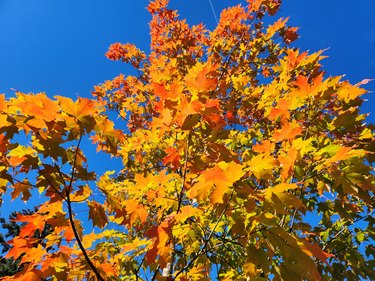
When the trees don their stunning autumn cloaks, gardeners know that it's time to put things to bed. Prepping for the long winter is a bit like squirrels building their nut stash before the cold comes: You'll be sorry if you don't.
Here is a list of fall garden tasks that you should take care of now, as well as a few that can — and ideally should — wait till late winter or early spring. If you have fruit or nut trees, taking care of them should be at the top of your list of things to do now.
Video of the Day
Video of the Day
Garden Cleanup: Should You or Shouldn't You?
Most fall gardens end up as a tangle of overgrown perennials, shrubs, and ground debris. Like many gardeners, I'm usually itching to clean up all of this so that I can look outside the windows in winter and appreciate a crisp, clean landscape. But despite the urge to make everything super tidy, it's best to be selective in what you "clean up" before winter.
Leave Perennials and Grasses
Leave grasses and the stalks of perennials standing, if you can live with it (this can be a little too messy for some front yards). There is no benefit to the plant to trim off these dead stalks before winter, and leaving them offers many benefits to wildlife. Birds and other creatures seek habitat and food in winter months when resources are scarce, and you can do your part by retaining this source of valuable food and protection. Leaving the stalks intact also provides some protection to the plant itself in areas with very cold winters.
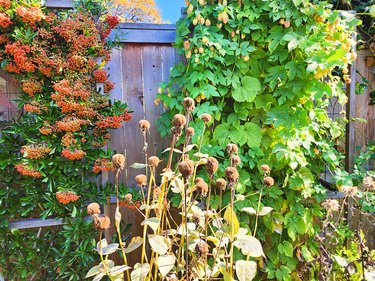
Tip
It may be a good idea to down perennials if they compromise your lawn or some other part of your yard. In my yard, I have a crocosmia plant that has grown so far out of its bounds that its dying stalks are now draped over my lawn. I did have to cut down those stalks, and now I'll have to thin the plant and reseed the grass next spring.
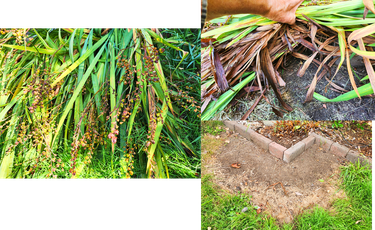
Certain shrubs and trees can become awesome elements in a winter garden. Our limelight hydrangea has lovely panicles that give some structure to an otherwise dreary landscape.
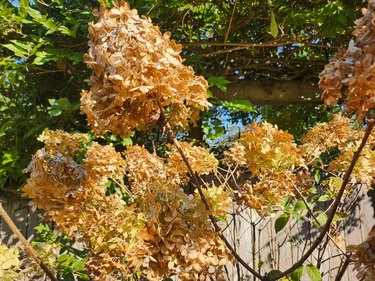
Rake Up or Chop Up Leaves — Don't Discard Them
A heavy mat of leaves left on a lawn all winter is bad for the grass and can provide inviting homes for unwanted rodents. So it's important either to rake them up or chop them up with a lawnmower so they decompose quickly.
If you rake the leaves, don't send them to the landfill. Instead, spread them onto your them over your flower or vegetable beds to provide some protection from extreme cold and from frequent rains, which wash nutrients from the soil.
Chopped leaves can be left on the grass or used in a compost pile — they're a good "brown" element for optimal compost chemistry. Chopped leaves on the lawn will break down over the winter and feed the grass nitrogen and other nutrients. Just be careful not to pile them under your fruit or nut trees, as this can encourage the wintering-over of pests and disease.

Remove Annual Vegetable Plants
Here's where cleanup matters. Make sure to pull up all annual veggie plants after the first killing frost. Rotting fruit and veggies and plant debris, as in other situations, can harbor insects and disease that can be passed onto crops the next year. For example, various tomato fungal diseases are serious couch potatoes in winter, lounging in old crops but ready to spring into action the following season.
After removing the plant debris, cover the beds with compost or mulch — or the leaves you gathered from raking!
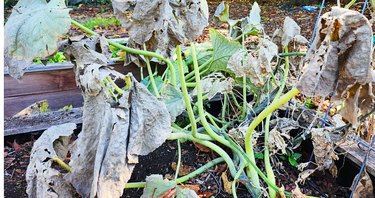
Yes, You Should Weed Before Winter
A weed is a seed factory waiting to burst and spread its unwelcome contents over your yard. Try to find the time for a fall weeding session before the weather turns too foul and you won't want to be out there.
Protect Tender Plants for Winter
You may have some plants or trees that are borderline in your USDA hardiness zone. If so, they need winter protection. Here are some tips:
Mulch. Mulch is of great use in the winter garden, especially in an area where the ground freezes. For trees and shrubs, however, wait until just after the first freeze to apply it, as the warm environment it creates can delay a plant from entering dormancy. Straw or leaves work great for this. Cardboard can also be useful.

Wrap trunks in burlap or bubble wrap. Don't throw away your bubble wrap you get from all those packages in the mail. It makes a great protective barrier for trunks of trees growing just within your hardiness zone. A hard freeze can do terrible damage to some trees and shrubs.
Spray anti-desiccant. Tender broadleaf evergreens lose a lot of moisture in the winter, and they can't take up water if the ground is frozen. If you live in an area where the ground freezes (and this is common), spray your trees with anti-desiccant to ensure they don't dry out during harsh winter months.
Preparing Fruit and Nut Trees for Winter
Fruit and nut trees require more care in the fall than many other trees because the goal is to support fruit production, not just healthy growth.

Encourage Cold-Hardiness
In most U.S. climates, trees need to develop cold-hardiness to survive the winter. You can help your trees do this, starting in summer:
- Stop fertilizing with a nitrogen-based mix while it's still summer so you're not promoting too much new growth as fall weather approaches.
- Do your best to control pests and disease, as these extract a lot of energy from a tree and can prevent it from becoming fully hardy.
- Thin the fruits in the summer because excess fruit can also delay the development of cold-hardiness.
In the fall, harvest all the fruit as soon as it is ready, rather than leaving it hanging on the tree. Fruit left on the tree continues to sap a tree's energy. So get out there and prepare to make some applesauce, apple crisp, or apple cider!
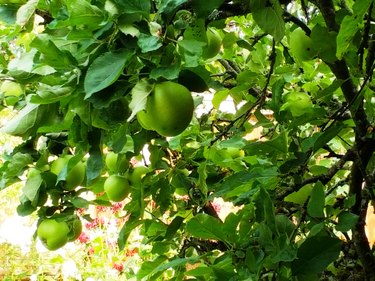
Clean Up Under the Canopy
Remove fruit mummies or any other rotting fruit under your trees. Not only are these delectable to rodents and other unwanted critters, but they are also cozy homes for insect pests to overwinter.
Here's one place you don't want to pile leaves: under a fruit or nut tree, i.e., any tree that produces something edible. Why? Because insect pests adore the warmth and cocoon of a pile of leaves.
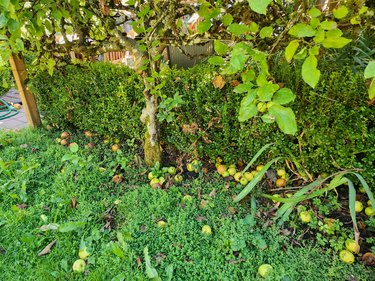
Fertilize — But Not With Nitrogen
All fruit and nut trees require fertilizer, but this is mostly applied in the spring. Fruit trees in particular can benefit from fall applications of fertilizer, but focus on the "PK" of the micronutrient NPK ratio (nitrogen, phosphorus, and potassium), and avoid the nitrogen, which promotes green, leafy growth — something you don't want just before frost and freezes set in. Phosphorus, however, is great for strong root growth, and potassium supports disease resistance and plant hardiness — all good things as your tree faces the winter blast.
This is also a good time to adjust the soil's pH. If your soil is too acidic (below 6), use agricultural lime to sweeten it. A too-high pH (above 7) needs the opposite, so you would apply sulfur.
Dormant Spraying Fruit Trees in Fall and Winter
There's a lot of expert information out there on pesticides or herbicides for protecting fruit trees. But typically these are geared toward more commercial enterprises. As a home gardener, I maintain an organic yard and try not to sweat it when some fruit doesn't make it to my table due to disease or pests. However, once pests take hold of a tree, they're hard to get rid of. For instance, codling moth — the bane of any apple tree grower — overwinters in any fallen fruit that you failed to pick up (and there's always something, it seems).
To ensure that I get some fruit, rather than none, I try to follow an organic spraying schedule recommended by Oregon State University extension. This entails four applications of dormant sprays between November and February, before the trees begin to bud as they come out of dormancy. Here's how it works:
- November: Apply copper
- Early January: Spray sulfur
- Early February: Spray horticultural oil
- Mid- to late-February: Apply copper again.
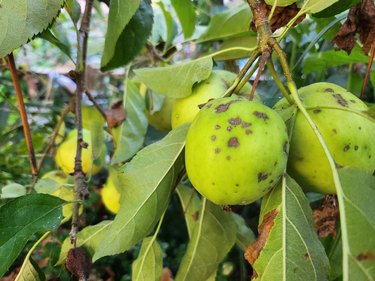
Tips for Dormant Spraying
Wait two weeks between sprays: Be sure to wait at least two weeks between the sulfur, oil, or copper applications, because a combination of copper and sulfur, or sulfur and oil, can harm the tree's bark.
Be sure to apply sulfur. The January application of sulfur is the most important. So if the Thanksgiving holiday just gobbles (pun intended) all your time, don't just give up; try for January.
A single spray is better than none. And, if January doesn't happen either, just pick up where you can.
Should You Prune Trees in Fall?
Ah, the big — and complicated — question: should you prune in the fall? And the answer is yes and no. But mostly no.
Yes: Prune the three Ds, always: dead, diseased, or damaged. Any time is a good time to remove three D branches.
No: Wait until spring for almost any other pruning. Pruning opens wounds that do not have the time to heal before a frost or freeze and therefore invite disease and cold damage during winter.
This is true of roses, and both fall-blooming and spring-blooming shrubs and trees. (For fall-bloomers, prune in late winter; for spring-bloomers, wait until after their spring flowering.)
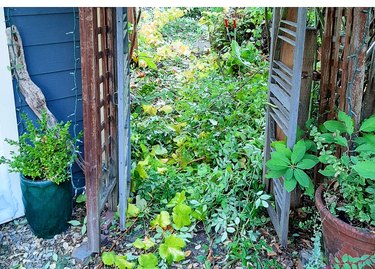
Pruning Tips for Fall
Even when removing dead or diseased growth, practice careful pruning techniques, especially in the fall. You want to avoid creating wounds. In a nutshell, this means:
- Avoiding major pruning, such as removing entire branches
- Performing angled cuts at about 45 degrees, with the low end facing out, to discourage pooling water on the cut
- Waiting till spring, when in doubt
But remember that pruning is a complicated topic, so if you are unsure on how or what to prune, seek the advice of an expert, such as a Master Gardener at your local university extension office.